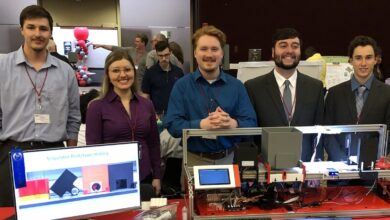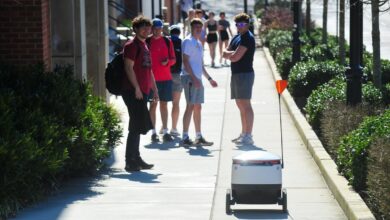Tiny rover squads could map Mars and beyond better than big robots

Researchers have announced the development of a new methodology allowing autonomous robot teams to find new exploration routes on other planets.
According to the study, the multi-robot teams will gather data from several sources—including HiRISE orbiter imaging, probability distribution maps, and onboard rover sensors—to plan and find the best possible routes for the different robots in the team.
The study is aimed at enabling a better exploration of Mars, especially the Jerezo crater.
According to the study, the methodology has been shown to coordinate safe and efficient rover paths, which ensures the rovers remain within their nominal pitch and roll limits throughout operation.
Putting robot teams on planets for exploration
The trustworthy operation of mobile robotic systems depends on their safe navigation of the environment around them. This primarily depends on their guidance system, particularly the associated path or trajectory planning algorithm.
The study proposes a multi-robot team approach to study the planets instead of one large robot.
It further states that the presence of multiple robots will increase the burden on the human operator; therefore, the robots must also have high-level autonomy while participating in the exploration.
Further, it proposes that each unit of the multi-rover team should have specialized roles. The specialized roles range from scouts, drillers, image analyzers, and sample storers/carriers.
Further, the data gathered from the various sources will lead to the creation of a 3D terrain model, which also shows other factors, such as the traversability analysis and probability distribution map of points of scientific interest.
These maps and other data will help the multi-robot teams easily execute complex missions.
Robot squad: The research and tests
To test the theory, the researchers used a bogie runt rover. They also used a path planning algorithm to figure out the routes that were longer but smoother and flatter to ensure safety.
The team also ensured that there was no scope for the multi-robot teams to collide with each other during the exploration. They designed safe paths and also indexed rovers on a priority list.
The full mission site used in testing had an area of 22500m2.
A team of five rovers, each with a sensor footprint of 1 meter radius, would have to cover an area of 4,500 meters for the exploration.
The performance of the proposed methods was evaluated over a set of randomly generated PDMs in the mission site of the Jezero crater, Mars. According to the study, collision-free autonomous exploration can be carried out efficiently over an area of 22500m2 in an average time of 38.26 minutes.
Moreover, the evaluation also showed that the rover trajectories generated during testing had an average length of 653.68 meters, which is comparable to the current record for the longest distance driven without human review by a planetary exploration rover.
The approach proposed in the study “successfully enables safe and efficient autonomous exploration of a 3D environment using a team of planetary exploration rovers.”
This methodology was introduced in the paper pre-published on arXiv.
ABOUT THE EDITOR
Abhishek Bhardwaj Abhishek brings a wealth of experience in covering diverse stories across different beats. Having contributed to renowned wire agencies and Indian media outlets like ANI and NDTV, he is keenly interested in Tech, Business and Defense coverage.



